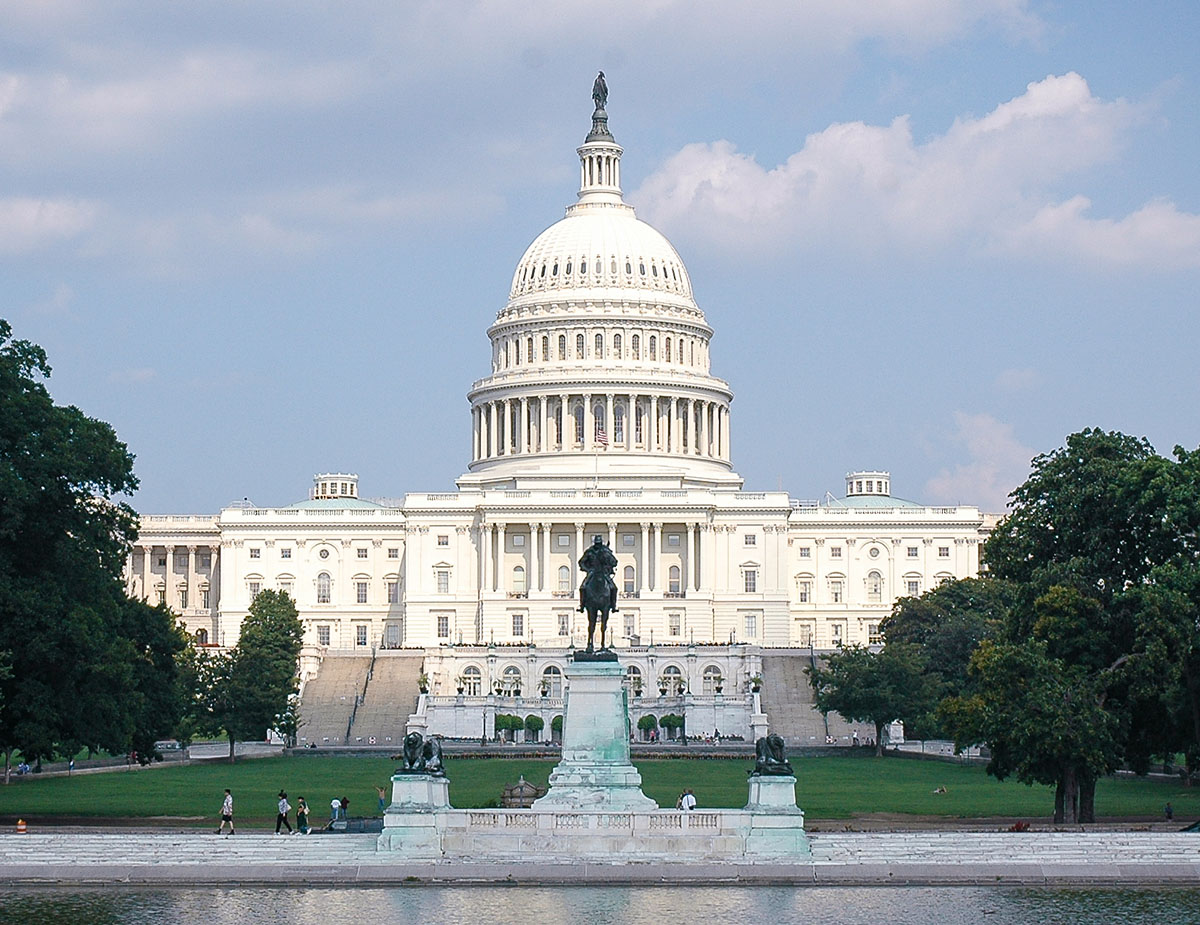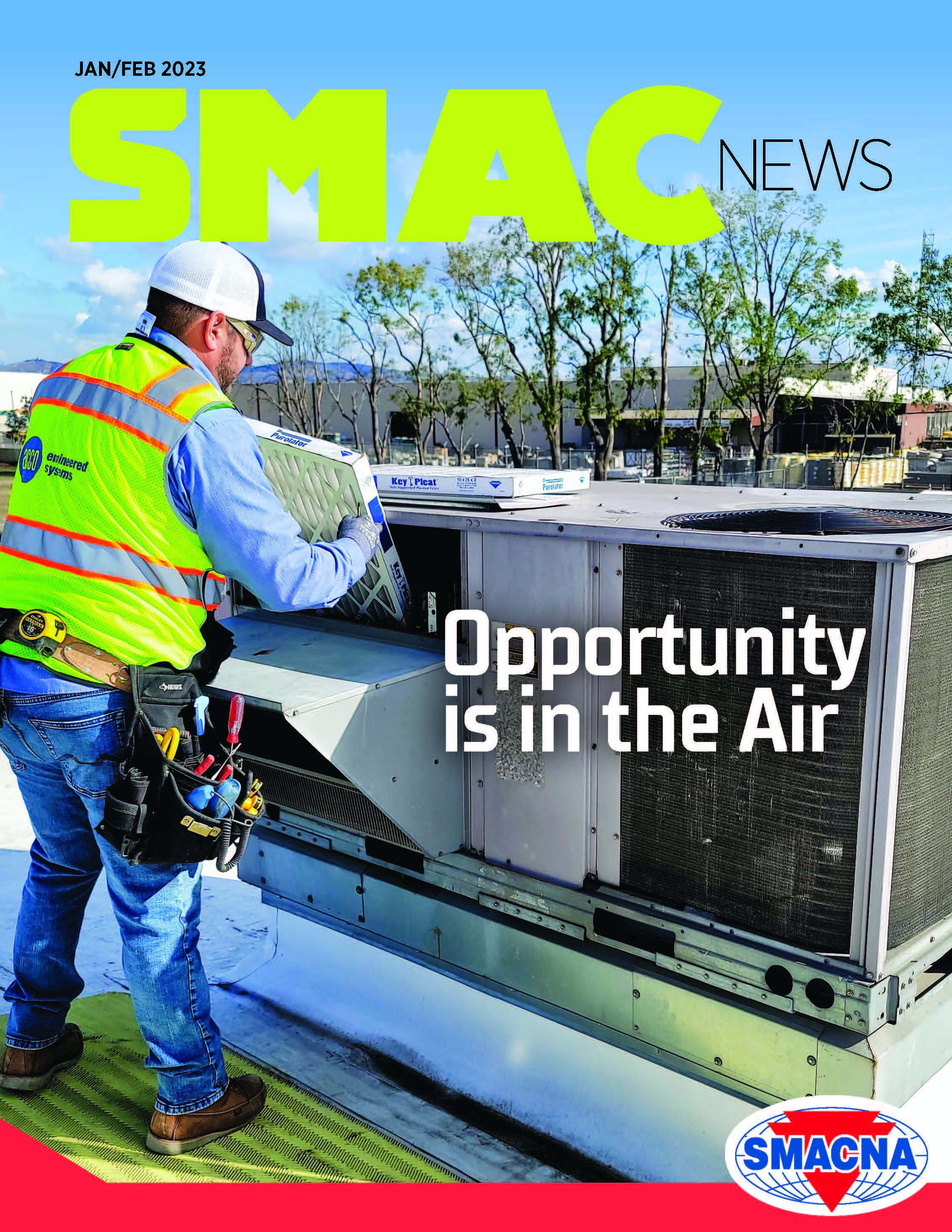State of the Union Response & GSA Carbon Scoring Rule Updates
Both chambers were in session in early February for the State of the Union legislative week. On Feb. 7, President Biden gave the State of the Union address to a pre-pandemic-sized crowd in the House chambers.
 Both chambers were in session in early February for the State of the Union legislative week. On Feb. 7, President Biden gave the State of the Union address to a pre-pandemic-sized crowd in the House chambers.
Both chambers were in session in early February for the State of the Union legislative week. On Feb. 7, President Biden gave the State of the Union address to a pre-pandemic-sized crowd in the House chambers.
THE SENATE
Senators returned the week of Feb. 13 for a light legislative work week. However, they did hold several key committee hearings while in town only to leave again for 10 days. During this time, they completed the rules for:
- The Government Shutdown Prevention Act (S. 299)
- The Transportation Fuel Market Transparency Act (S. 259)
The Senate also spent the week considering nominations and finalizing their rosters and naming Subcommittee Chairs and Ranking Members:
- U.S. Senators Tom Carper (D-DE) and Shelley Moore Capito (R-WV) Chair and Ranking Members of the Senate EPW Committee announced committee spots.
- The Senate HELP Committee delayed advancing SMACNA-endorsed Wage and Hour nominee Jessica Looman due to Senator Casey’s absence.
GROUPS ENDORSING THE STATE OF THE UNION
After the president’s speech, the White House released a document outlining the organizations who applauded Tuesday’s address:
- Sheet Metal, Air, Rail, Transportation Union (SMART): “On the campaign trail and during his first State of the Union speech last year, President Biden made big promises: substantial infrastructure investment for the first time in decades, the return of manufacturing to America, and an economy that works from the bottom up and the middle out, not the top down. Now, two years after the president’s inauguration, we can say that the Biden administration is delivering on those promises.”
- Sean McGarvey, President, NABTU: “... President Biden and the 117th Congress laid an extraordinary sustainable foundation that will generate millions of middle-class, family-sustaining careers and protect workers’ health and wages for years to come.”
SMACNA COMMENTS ON GSA CARBON SCORING RULE FOR FEDERAL CONTRACTORS
While generally endorsing the FAR decarbonization policy goals (Federal Supplier Climate Risk and Resilience Rule, FAR Case No. 2021–015, 87 Fed. Reg. 68312) that establish guidelines and incentives for the largest direct federal contractor market leaders, SMACNA had many suggested revisions to the policy draft.
As the world’s largest purchaser of products and services, with $630 billion of procurements in 2021, the federal government relies heavily on its supply chain to deliver critical services to the public. The Proposed Rule would provide the government with the critical information needed to make higher quality contractor selection decisions at a time of great variability among companies in their handling of climate change risk, as well as highly complex construction project decisions. The FAR Council’s proposal contains several core provisions that directly confront the buildup of risk in the federal supply chain. Together, they will ensure that the government has the emissions-related disclosures and science-based targets it needs to determine whether larger scale contractors are meeting the federal government’s sustainability goals and project requirements.
SMACNA suggestions:
- SMACNA said the gross dollar volume threshold is too low for HVAC/mechanical contractors of relatively small size.
- SMACNA proposed HVAC-mechanical equipment specified by federal officials not be counted toward the $50 million federal contract sales volume.
- SMACNA supported a higher threshold for the $50-million category if it excludes HVAC-mechanical equipment specified by the federal contract and not fabricated by the contractor bidding on the project.
- SMACNA endorsed the listed and other waiver exceptions for contracting officials to be flexibly administered for the earliest implementation period.
- SMACNA suggested that federal contractors not only provide climate change resiliency for materials supply and delivery related assurances and forecasts but also include their skilled workforce and training capabilities as a key factor in measuring construction resiliency security and program viability.
- SMACNA endorsed the overall collection of exemption provisions responsive to the subcontracting businesses.
Private developers and the U.S. government, as well as many state and local governments have supported a variety of modest as well as more advanced initiatives to reduce emissions and energy costs by supporting efficiency upgrades in public and private facilities. Generally, this has been through support for job-creating retrofit tax incentive and direct grant programs as well as incentives to produce sustainable buildings. The federal infrastructure initiatives also have included direct grants to state and local code authorities to upgrade building codes to focus on decarbonization, where possible. These emission and efficiency enhancements have included the adoption of more aggressive and modern energy codes for new buildings with public support to make long overdue reforms.
Published: March 21, 2023
IN THIS ISSUE
Between the Lava and the Rain
Hawaii Sheet Metal & Mechanical works amid the challenges of an active volcano.
Crafting Metal Works of Art
Artists make unique clients for A. Zahner Co., which has extensive experience in this area.
Effective High-end Residential Strategies
T.H. Martin shares eight tips for working on condos, apartments and hybrid spaces.
How SMACNA Is Increasing Engagement Opportunities
Measuring and evaluating engagement and utilizing that information to tailor programming to the needs of members is now more important than ever.
HVAC for U.S. Air Force Hangars
United Mechanical tackles its fifth hangar project — the KC-46A Three Bay Maintenance Hangar at Tinker Air Force Base in Midwest City, Oklahoma.
Inside SMACNA's 2023 Strategic Plan
SMACNA’s CEO discusses the new strategic plan and how it will strengthen SMACNA’s position with key stakeholders.
Opportunity Is In The Air
Assuring clean air in buildings is becoming an essential service, and members can easily gain the tools to perform in-demand ventilation verification work.
State Marijuana Laws May Pose Security Clearance Problems for Contractors
In recent years, states have moved quickly to pass laws legalizing marijuana. To date, 21 states have legalized recreational marijuana and an additional 16 states have authorized marijuana for medical use.
State of the Union Response & GSA Carbon Scoring Rule Updates
Both chambers were in session in early February for the State of the Union legislative week. On Feb. 7, President Biden gave the State of the Union address to a pre-pandemic-sized crowd in the House chambers.
The Weakest Link?
With an uncertain supply chain that still seems broken, many SMACNA contractors are turning to stockpiles and substitutions to keep projects and profits on track.
Top Contractor Strategies for 2023: Part 1
With 2023 well underway, there is still a lot of noise in the world today that detours business owners from charting a confident course through this new year.
Understanding Possible Targets of Cyberattacks
With reports telling us that cyberattacks have been perpetually on the rise, and with the cybersecurity industry not only short millions of qualified professionals but also suffering from burnout, preparing for attacks is getting tougher.
Welcome New SMACNA Members
Welcome New SMACNA Members


